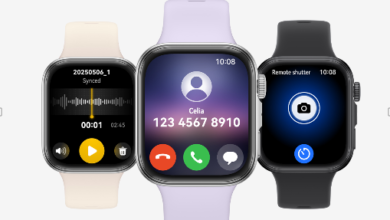B2B Customer Journey: Mapping the Decision-Making Process

The B2B customer journey is a complex, multifaceted process that guides business buyers from initial awareness to long-term partnership. Unlike B2C, where decisions are often impulsive and individual, B2B purchasing involves multiple stakeholders, extended timelines, and a focus on value-driven outcomes. Mapping this journey enables organizations to understand buyer motivations, address pain points, and deliver targeted experiences that drive conversions and loyalty. This article explores the stages of the B2B customer journey, strategies for effective engagement, and the critical role of data and technology in optimizing the decision-making process.
The Unique Nature of B2B Buying
The B2B customer journey differs significantly from its B2C counterpart due to the complexity of business purchasing decisions. B2B buyers—whether executives, procurement teams, or technical specialists—prioritize solutions that align with organizational goals, such as cost efficiency, scalability, or innovation. Decisions often involve multiple decision-makers, each with distinct priorities, and can take weeks, months, or even years to finalize. The journey is rarely linear, with buyers revisiting stages as they gather information, evaluate options, and seek internal consensus.
Mapping this journey provides a framework for understanding these dynamics. By identifying key touchpoints, pain points, and decision drivers, businesses can craft strategies that resonate with buyers at every stage, fostering trust and accelerating the path to purchase.
Stages of the B2B Customer Journey
The B2B customer journey can be segmented into distinct stages, each requiring tailored approaches to engage buyers effectively. While the specifics vary by industry, the following stages provide a universal structure.
Awareness and Problem Identification
The journey begins when a business recognizes a challenge or opportunity, such as outdated technology, operational inefficiencies, or market expansion goals. At this stage, buyers seek information to define their needs, often turning to thought leadership content, industry reports, or peer recommendations. For example, a company looking to improve supply chain efficiency might explore whitepapers or webinars on logistics solutions.
To engage buyers here, B2B brands must establish credibility. High-quality content—like blog posts, case studies, or LinkedIn articles—positions a brand as a trusted authority. Search engine optimization and targeted advertising ensure visibility when buyers research solutions, while networking at industry events can spark initial connections.
Research and Evaluation
Once the problem is defined, buyers enter a research-intensive phase, exploring potential vendors and solutions. This stage involves deep dives into product specifications, pricing models, and vendor reputations. Multiple stakeholders—such as IT, finance, and operations teams—may conduct independent research, consulting websites, analyst reports, or peer reviews.
Engagement at this stage requires accessible, detailed information. A robust website with clear product descriptions, comparison charts, and customer testimonials builds confidence. Webinars, product demos, or one-on-one consultations can address specific concerns, while email nurturing campaigns deliver relevant content to keep the brand top-of-mind. Personalization is critical, as buyers expect solutions tailored to their industry or business size.
Decision and Negotiation
The decision stage is where buyers narrow their options and seek internal approval. This often involves rigorous evaluations, such as request-for-proposal (RFP) processes, pilot programs, or stakeholder meetings. Price, scalability, and return on investment (ROI) are key considerations, alongside softer factors like vendor reliability and support quality.
To facilitate decisions, brands must provide transparent pricing, detailed proposals, and proof of value, such as ROI calculators or success stories. Account managers or sales teams play a pivotal role, addressing objections and customizing solutions. Flexibility in negotiations—such as offering tiered pricing or implementation support—can tip the scales in a brand’s favor.
Implementation and Onboarding
After a contract is signed, the journey shifts to implementation and onboarding. This stage is critical for setting the tone of the partnership. Buyers expect seamless integration, clear communication, and robust support to ensure the solution delivers as promised. For example, a company adopting a new CRM system will rely on training sessions, technical support, and regular check-ins to maximize value.
Effective onboarding involves proactive engagement. Dedicated account managers, detailed setup guides, and training resources ensure a smooth transition. Regular progress updates and feedback loops demonstrate commitment, while addressing early challenges quickly builds trust.
Retention and Expansion
The B2B journey extends far beyond the initial sale, focusing on retention and growth. Satisfied clients are more likely to renew contracts, expand usage, or explore additional products. This stage involves ongoing support, performance reviews, and opportunities for upselling or cross-selling. For instance, a software provider might introduce advanced features to a client who initially purchased a basic package.
To foster loyalty, brands should maintain consistent communication through quarterly reviews, newsletters, or exclusive client events. Customer success teams can identify opportunities for expansion by analyzing usage data and aligning offerings with evolving needs. Referral programs or case study collaborations can also turn satisfied clients into advocates.
Re-Engagement and Renewal
Over time, some clients may disengage due to changing priorities or dissatisfaction. Re-engagement strategies, such as targeted emails or personalized consultations, aim to address concerns and highlight new value propositions. At contract renewal, buyers reassess the partnership, weighing performance against expectations.
Proactive re-engagement involves anticipating client needs. For example, a vendor might offer a performance audit or updated solution to align with a client’s growth. Transparent communication about pricing changes or enhanced features can ease renewal discussions, ensuring long-term partnerships.
See also: How Discord Stores Billions or Trillions of Messages: A Look Behind the Technology
Strategies for Optimizing the B2B Journey
Engaging B2B buyers requires a strategic approach that aligns with their decision-making process. The following strategies enhance the journey at every stage.
Leveraging Account-Based Marketing (ABM)
Account-based marketing targets high-value accounts with personalized campaigns. By focusing on specific companies or decision-makers, ABM ensures content and outreach align with their unique needs. For example, a cybersecurity firm might create tailored case studies for a target enterprise, highlighting solutions to their specific vulnerabilities. ABM requires close collaboration between marketing and sales to deliver cohesive, high-impact engagement.
Building Trust Through Content
Content is a cornerstone of the B2B journey, particularly in the awareness and research stages. Thought leadership—such as whitepapers, industry reports, or expert webinars—establishes credibility and educates buyers. Interactive content, like ROI calculators or product configurators, engages buyers by addressing their specific challenges. Consistency in tone and value across content builds trust and reinforces brand authority.
Streamlining Decision-Making
The complexity of B2B decisions, with multiple stakeholders and lengthy timelines, can create friction. Brands can simplify this by providing clear, concise information and facilitating consensus. For instance, offering stakeholder-specific resources—like technical guides for IT teams or financial breakdowns for CFOs—addresses diverse priorities. Virtual demos or trial periods allow buyers to experience solutions firsthand, reducing uncertainty.
Harnessing Data and Analytics
Data-driven insights are critical for mapping and optimizing the B2B journey. Customer relationship management (CRM) systems and analytics platforms track interactions, revealing which touchpoints drive engagement or cause drop-offs. Predictive analytics can identify high-potential accounts or flag at-risk clients, enabling proactive interventions. Regular analysis of metrics like engagement rates or deal velocity ensures strategies remain aligned with buyer behavior.
The Role of Technology in Shaping the Journey
Technology is transforming the B2B customer journey, enabling brands to deliver more precise, scalable experiences. Artificial intelligence (AI) and machine learning power personalization, analyzing vast datasets to predict buyer needs and recommend tailored solutions. For example, AI might identify which content resonates with a specific industry, optimizing email campaigns or website experiences.
Automation platforms streamline repetitive tasks, such as lead nurturing or follow-up emails, freeing sales teams to focus on relationship-building. Real-time data integration across channels—such as websites, CRMs, and social platforms—ensures a cohesive journey, with each interaction informed by the buyer’s previous actions. Emerging technologies, like virtual reality demos or AI-driven chatbots, are also enhancing engagement, offering immersive and responsive experiences.
Addressing Challenges
The B2B customer journey presents unique challenges, including stakeholder alignment, long sales cycles, and data silos. Coordinating multiple decision-makers requires tailored communication that addresses each role’s priorities. Long timelines demand sustained engagement, which can be achieved through consistent, value-driven touchpoints. Data silos, where information is fragmented across departments, hinder a unified view of the buyer. Investing in integrated platforms and cross-functional collaboration mitigates these issues.
Privacy and trust are also critical. B2B buyers expect transparency in how their data is used, particularly with regulations like GDPR. Clear data policies and secure systems are essential to maintaining confidence.
Shaping Long-Term Partnerships
The B2B customer journey is a strategic roadmap for building enduring partnerships. By mapping the stages—awareness, research, decision, implementation, retention, and re-engagement—brands can deliver targeted, meaningful experiences that align with buyer needs. Strategies like ABM, high-value content, and data-driven insights ensure engagement at every touchpoint, while technology amplifies efficiency and personalization. In a competitive B2B landscape, mastering the customer journey is not just about closing deals—it’s about fostering trust and value that transform buyers into lifelong partners.




